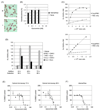A malaria gametocytocidal assay using oxidoreduction indicator, alamarBlue
- PMID: 21316401
- PMCID: PMC3075389
- DOI: 10.1016/j.molbiopara.2011.02.005
A malaria gametocytocidal assay using oxidoreduction indicator, alamarBlue
Abstract
Efforts to move from malaria control to eradication will require new approaches to block malaria transmission, such as the development of anti-malarial drugs with gametocytocidal activity. Here fluorescent oxidoreduction indicator alamarBlue is used to develop a screen for gametocyte viability. The fluorescent signal increases linearly with gametocyte number (R(2)=0.99) and determination of the IC(50) of epoxomicin demonstrated the assay was reproducible and sensitive (IC(50) 2.16±0.57 nM, Z'-factor 0.81±0.01). Six anti-malarials were also tested and at 10 μM only primaquine and dihydroartemisinin (DHA) had gametocytocidal activity. This new assay provides an important tool to efficiently screen compounds for gametocytocidal activity.
Published by Elsevier B.V.
Figures


Similar articles
-
A quantitative high throughput assay for identifying gametocytocidal compounds.Mol Biochem Parasitol. 2013 Mar;188(1):20-5. doi: 10.1016/j.molbiopara.2013.02.005. Epub 2013 Feb 27. Mol Biochem Parasitol. 2013. PMID: 23454872 Free PMC article.
-
Inclusion of gametocyte parameters in anti-malarial drug efficacy studies: filling a neglected gap needed for malaria elimination.Malar J. 2015 Oct 19;14:413. doi: 10.1186/s12936-015-0936-4. Malar J. 2015. PMID: 26481312 Free PMC article.
-
Anti-malarial drugs: how effective are they against Plasmodium falciparum gametocytes?Malar J. 2012 Feb 6;11:34. doi: 10.1186/1475-2875-11-34. Malar J. 2012. PMID: 22305482 Free PMC article.
-
The role of anti-malarial drugs in eliminating malaria.Malar J. 2008 Dec 11;7 Suppl 1(Suppl 1):S8. doi: 10.1186/1475-2875-7-S1-S8. Malar J. 2008. PMID: 19091042 Free PMC article. Review.
-
Critical examination of approaches exploited to assess the effectiveness of transmission-blocking drugs for malaria.Future Med Chem. 2018 Nov;10(22):2619-2639. doi: 10.4155/fmc-2018-0169. Epub 2018 Nov 30. Future Med Chem. 2018. PMID: 30499742 Review.
Cited by
-
Antiapicoplast and gametocytocidal screening to identify the mechanisms of action of compounds within the malaria box.Antimicrob Agents Chemother. 2014;58(2):811-9. doi: 10.1128/AAC.01500-13. Epub 2013 Nov 18. Antimicrob Agents Chemother. 2014. PMID: 24247137 Free PMC article.
-
Drugs for malaria: something old, something new, something borrowed.F1000 Biol Rep. 2011;3:24. doi: 10.3410/B3-24. Epub 2011 Nov 1. F1000 Biol Rep. 2011. PMID: 22076126 Free PMC article.
-
Male and female Plasmodium falciparum mature gametocytes show different responses to antimalarial drugs.Antimicrob Agents Chemother. 2013 Jul;57(7):3268-74. doi: 10.1128/AAC.00325-13. Epub 2013 Apr 29. Antimicrob Agents Chemother. 2013. PMID: 23629698 Free PMC article.
-
Nowhere to hide: interrogating different metabolic parameters of Plasmodium falciparum gametocytes in a transmission blocking drug discovery pipeline towards malaria elimination.Malar J. 2015 May 22;14:213. doi: 10.1186/s12936-015-0718-z. Malar J. 2015. PMID: 25994518 Free PMC article.
-
The antimalarial screening landscape-looking beyond the asexual blood stage.Curr Opin Chem Biol. 2019 Jun;50:1-9. doi: 10.1016/j.cbpa.2019.01.029. Epub 2019 Mar 12. Curr Opin Chem Biol. 2019. PMID: 30875617 Free PMC article. Review.
References
-
- Trape JF. The public health impact of chloroquine resistance in Africa. Am J Trop Med Hyg. 2001;64:12–17. - PubMed
Publication types
MeSH terms
Substances
Grants and funding
LinkOut - more resources
Full Text Sources
Other Literature Sources

